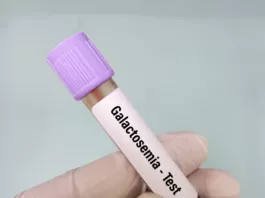Selenium is an essential mineral that must be provided to the human body for normal physiological functions. Although it is a trace mineral, which means only a small amount is needed for the body, it has diverse actions necessary for normal daily activities and growth. A selenium deficiency leads to several issues in your body involving the cardiovascular, endocrine, and immune systems.
What is Selenium Deficiency?
Selenium is a necessary trace mineral that plays a great role in maintaining normal human health. A deficiency of selenium makes your body prone to damage by free radicals, reactive oxygen, and nitrogen species. It is because glutathione peroxidase, a selenium-containing protein, becomes deficient, and its main function is to protect your body against radicals. The body’s immune system also relies on the availability of selenium; hence, its deficiency makes the immune system weak and vulnerable. Moreover, this deficiency also causes thyroid problems as it helps activate triiodothyronine (T3).
Plant-based foods are a rich source of selenium, and lacking these foods in your diet can lead to Selenium Defixiency.1Shreenath, A. P., Hashmi, M. F., & Dooley, J. (2023). Selenium Deficiency. In StatPearls. StatPearls Publishing.
How common is Selenium Deficiency?
This is a common problem in various regions of the United States because of insufficient selenium intake through diet. Areas of the US with less production of selenium-containing plants have more incidence of selenium deficiency, such as the Northwest, Northeast, and Southwest. This deficiency is higher in the US than in Europe due to the lower availability of selenium-rich food. Some countries, such as Finland, take serious action to overcome selenium deficiency by fortifying their fertilizers with selenium. People eat Brazilian nuts, crabs, and fish to compensate, as these foods are a rich source of selenium. However, their use has become limited due to harmful agents in these foods, such as arsenic and mercury.
The deficiency of selenium also depends on a person’s health condition. People with already existing malabsorption problems, nutrient deficiencies, and phenylketonuria (excess accumulation of phenylalanine in the body) are at greater risk of developing selenium deficiency.2Belay, A., Joy, E. J. M., Chagumaira, C., Zerfu, D., Ander, E. L., Young, S. D., Bailey, E. H., Lark, R. M., Broadley, M. R., & Gashu, D. (2020). Selenium Deficiency Is Widespread and Spatially Dependent in Ethiopia. Nutrients, 12(6), 1565. https://doi.org/10.3390/nu12061565
Causes of Selenium Deficiency
The main source of selenium is soil, and the plants that take it from the soil also become rich sources of selenium. Continuous use of a diet deficient in selenium-rich plants leads to this deficiency.
Selenium is richly present in Brazillian nuts, button mushrooms, and barley seedlings, and eating these foods decreases the harmful effects. People allergic to yeast or bread are also at risk of this deficiency as yeast is a wealthy source of selenium. The meat of animals eating selenium-rich foods such as fish, seafood, or poultry is a good source of selenium.
The availability of selenium in a region also depends upon climate changes, water resources, and the pH of the plants that take selenium from the soil.3Schomburg L. (2021). Selenium Deficiency Due to Diet, Pregnancy, Severe Illness, or COVID-19-A Preventable Trigger for Autoimmune Disease. International journal of molecular sciences, 22(16), 8532. https://doi.org/10.3390/ijms22168532
Symptoms of Selenium Deficiency
It affects almost every body system, leading to different and variable symptoms. These include:
Cardiovascular System:
This deficiency causes Keshan syndrome, which is a type of congestive cardiomyopathy. Symptoms of Keshan syndrome include an enlarged heart, irregular pattern of your ECG, heart failure, gallop rhythm (third heart sound), and cardiogenic shock (hypotension, weak pulse, and increased respiratory rate). Keshan syndrome typically involves children and women in their middle age, and taking selenium supplements greatly reduces the symptoms and incidence of Keshan syndrome. Some additional factors also contribute to the severity of symptoms, such as the Coxsackie virus infection.4Shimada, B. K., Alfulaij, N., & Seale, L. A. (2021). The Impact of Selenium Deficiency on Cardiovascular Function. International journal of molecular sciences, 22(19), 10713. https://doi.org/10.3390/ijms221910713
Endocrine System:
The thyroid gland in your body contains an abundant amount of selenium in the form of selenoproteins. Among these selenoproteins, three are in the form of iodothyronine deiodinases, which play a great role in the metabolism of thyroid hormones. They help in the conversion of inactive T3 to active T4 in the blood, as well as control the inhibition of thyroid hormones. This deficiency adversely affects the thyroid gland by decreasing the level of T4 in your body and causing symptoms of hypothyroidism, such as weight gain, cold intolerance, and dry skin.
Immune System:
Selenium protects cell membranes from the harmful effects of oxidation and hydrogen peroxide with the help of the G-Px enzyme. It also maintains the integrity of the membrane by augmenting the useful effects of Vitamin E. Selenium deficiency deprives the body of these beneficial effects, leading to peroxidative damage and stress on cell membranes.
This deficiency can turn a benign viral disease into a serious and malignant condition, such as hepatitis B and C. Some cases of influenza in China have become life-threatening due to selenium deficiency.
One important function of selenium is the differentiation of CD4+ cells into helper T cells, and these T cells slow down the cycle of HIV. Patients who are HIV positive progress rapidly towards AIDS if they have selenium deficiency, as selenium renders the progression of HIV.
This deficiency makes your body vulnerable to the harmful and toxic effects of heavy metals like lead, cadmium, and mercury.5Hoffmann, P. R., & Berry, M. J. (2008). The influence of selenium on immune responses. Molecular nutrition & food research, 52(11), 1273–1280. https://doi.org/10.1002/mnfr.200700330
Musculoskeletal System:
This deficiency has harmful effects on your bones, cartilage, and joints. Kashin-Beck disease is a musculoskeletal disorder involving joint enlargement and difficulty in movement. Although it has multifactorial causes, selenium deficiency is one of them. A proper diet that involves selenium and selenium supplements has been proven to reduce the symptoms of Kashin-Beck disease.6Perri, G., Mendonça, N., Jagger, C., Walsh, J., Eastell, R., Mathers, J. C., & Hill, T. R. (2020). Dietary Selenium Intakes and Musculoskeletal Function in Very Old Adults: Analysis of the Newcastle 85+ Study. Nutrients, 12(7), 2068. https://doi.org/10.3390/nu12072068
Central Nervous System:
This deficiency leads to anxiety, irritability, and low mood. As selenium helps in the normal turnover of various neurotransmitters in the brain, its deficiency leads to abnormal amounts of neurotransmitters. Hence causing psychiatric problems.
Reproductive System:
The effects of this deficiency are more in the male reproductive system. Selenium helps in the synthesis of testosterone as well as the normal development of spermatozoa. With its deficiency, males suffer from decreased libido and infertility. Selenium deficiency also reduces the normal sperm count in semen, reducing the reproduction chance.7Mistry, H. D., Broughton Pipkin, F., Redman, C. W., & Poston, L. (2012). Selenium in reproductive health. American journal of obstetrics and gynecology, 206(1), 21–30. https://doi.org/10.1016/j.ajog.2011.07.034
Diagnosis
Selenium deficiency has a wide spectrum of symptoms involving almost every system of your body. Therefore, it is crucial to have a comprehensive evaluation of the patient, including a history, examination, and laboratory tests, to diagnose selenium deficiency properly.
History of the Patient:
The patient’s history is essential to identifying important information regarding selenium deficiency and diagnosing its causes. Your doctor gathers information about your medical history, which includes past and present drug history, history of any acute or chronic disease, family history of any nutrient deficiency disease, and Dietary history. Selenium deficiency mostly occurs in areas with selenium-deficient soil, so you must provide your geographical history to the healthcare provider.
Physical Examination:
Physical examination is as important as taking a proper history of the symptoms.
It includes evaluating the heart by checking its rate and rhythm and properly assessing its size. This deficiency affects the musculoskeletal system, so the joints must be physically examined. The doctor carefully examines the joints’ tenderness, swelling, and abnormalities.
To diagnose it, the doctor looks for any signs of neurological origin, such as abnormal reflexes, abnormal gait, decreased sensory perception, and reduced coordination. The signs are also evident in your skin and nails. Examining skin and nails with selenium deficiency would show different skin texture, pigmentation changes, white spots, or brittle nails.
It is critical to do the relevant examination of selenium deficiency in men as selenium deficiency is known to cause a decreased level of testosterone and poor development of sperm.
Serum & Urinary Selenium Levels:
The standard laboratory method for diagnosing selenium deficiency is measuring the serum selenium level. The US Institute of Medicine recommends a normal reference range of 70 to 155 micrograms per liter.
The level of selenium in the urine shows the recent intake of selenium either through supplements or diet. However, urinary selenium levels are not much recommended due to the variable excretion of selenium in the urine.8Al-Matary, A., Hussain, M., & Ali, J. (2013). Selenium: a brief review and a case report of selenium responsive cardiomyopathy. BMC Pediatrics, 13, 39. https://doi.org/10.1186/1471-2431-13-39
Plasma G-Px Activity:
The G-Px enzyme in your plasma is a selenium-dependent enzyme, and its level indirectly indicates the presence of selenium in your body.
X-Ray:
X-rays help identify bone and joint abnormalities associated with selenium deficiency, such as Kashin-Beck disease.
MRI:
It identifies abnormalities that are not easily diagnosed by X-rays. MRI of the bones easily diagnoses problems such as joint pain and movement restrictions in selenium deficiency.
Bone Density Scans:
Bone density scan, or DEXA, is a renowned modality that helps to see the deeper issues in bones, their density, and their overall health. It helps to diagnose severe cases of selenium deficiency, which affects bone structure and increases the risk of fractures.

Selenoprotein P Concentration:
Selenoprotein P concentration is one effective laboratory test for diagnosing this deficiency in the body.
Treatment of Selenium Deficiency
This deficiency doesn’t involve a single individual. Rather, it affects the whole community in an area with deficient soil. The main intent of treatment is to make the soil rich in selenium. This is possible with the help of agricultural workers who use biofortification techniques to augment the soil with selenium.
This deficiency can also be treated by enriching the animal fodder, such as eggs, with selenium, which is beneficial. Another strategy is to harness the microorganism that forms yeast, as yeast is a wealthy source of selenium.
People with acute and mild selenium deficiency often benefit from taking inorganic salts as they contain adequate selenium.9Dobrzyńska, M., Drzymała-Czyż, S., Woźniak, D., Drzymała, S., & Przysławski, J. (2023). Natural Sources of Selenium as Functional Food Products for Chemoprevention. Foods (Basel, Switzerland), 12(6), 1247. https://doi.org/10.3390/foods12061247
Complications of Selenium Deficiency
Chronic and severe cases of selenium deficiency lead to various serious consequences, as this deficiency causes unfavorable implications in nearly every system of your body. Complications include a dysfunctional immune system, making your body more prone to getting infections, male and female infertility, heart failure, miscarriage, fetal growth restriction, preterm labor, cardiomyopathy, Keshan disease, Kashin-Beck disease, cognitive impairment, and gestational diabetes.10Sun, Y., Wang, Z., Gong, P., Yao, W., Ba, Q., & Wang, H. (2023). Review on the health-promoting effect of adequate selenium status. Frontiers in nutrition, 10, 1136458. https://doi.org/10.3389/fnut.2023.1136458
Differential Diagnoses for Selenium Deficiency
Symptoms of this deficiency touch almost every organ of your body. It is crucial to carefully analyze the signs and symptoms as some of the symptoms resemble the symptoms of many other mineral deficiencies or metabolic diseases. Differentials of selenium deficiency are:
- Addison’s disease
- Anemia
- Anovulation
- Autoimmune thyroid disease and hypothyroidism
- Cardiac tamponade
- Pericardial effusion
- Pregnancy
- Pituitary microadenomas
- Prolactin deficiency
- Constipation
- Euthyroid sick syndrome
How much Selenium should I take per day?
According to the World Health Organization, the recommended upper level of selenium in adults and older people is 400 micrograms or 1.5 micromoles per day. This is the safest margin of selenium in your body. Levels more than that can be hazardous due to the selenium toxicity.
A balanced diet is the best way to treat selenium. It helps the body absorb the selenium to the required level.
Prognosis of Selenium Deficiency
The prognosis entirely depends upon your overall health status and the severity of the deficiency in your body. The duration of this deficiency also plays a part in its prognosis. Better and earlier diagnosis and intervention lead to a good prognosis and ensure the reversal of symptoms.
However, prolonged and serious cases of selenium deficiency can cause irreversible outcomes in your body.
Conclusion
In conclusion, your body needs selenium in trace amounts, yet it has several beneficial effects on many organs. This deficiency occurs when you eat an unbalanced diet without eggs, Brazil nuts, or meat. It also occurs due to malabsorption diseases, and this deficiency leads to variable signs and symptoms involving the heart, brain, endocrine, and musculoskeletal systems. Take a selenium-rich diet and supplements to avoid the harmful consequences of its deficiency. Early diagnosis and treatment are important to ensure a good prognosis.
Refrences
- 1Shreenath, A. P., Hashmi, M. F., & Dooley, J. (2023). Selenium Deficiency. In StatPearls. StatPearls Publishing.
- 2Belay, A., Joy, E. J. M., Chagumaira, C., Zerfu, D., Ander, E. L., Young, S. D., Bailey, E. H., Lark, R. M., Broadley, M. R., & Gashu, D. (2020). Selenium Deficiency Is Widespread and Spatially Dependent in Ethiopia. Nutrients, 12(6), 1565. https://doi.org/10.3390/nu12061565
- 3Schomburg L. (2021). Selenium Deficiency Due to Diet, Pregnancy, Severe Illness, or COVID-19-A Preventable Trigger for Autoimmune Disease. International journal of molecular sciences, 22(16), 8532. https://doi.org/10.3390/ijms22168532
- 4Shimada, B. K., Alfulaij, N., & Seale, L. A. (2021). The Impact of Selenium Deficiency on Cardiovascular Function. International journal of molecular sciences, 22(19), 10713. https://doi.org/10.3390/ijms221910713
- 5Hoffmann, P. R., & Berry, M. J. (2008). The influence of selenium on immune responses. Molecular nutrition & food research, 52(11), 1273–1280. https://doi.org/10.1002/mnfr.200700330
- 6Perri, G., Mendonça, N., Jagger, C., Walsh, J., Eastell, R., Mathers, J. C., & Hill, T. R. (2020). Dietary Selenium Intakes and Musculoskeletal Function in Very Old Adults: Analysis of the Newcastle 85+ Study. Nutrients, 12(7), 2068. https://doi.org/10.3390/nu12072068
- 7Mistry, H. D., Broughton Pipkin, F., Redman, C. W., & Poston, L. (2012). Selenium in reproductive health. American journal of obstetrics and gynecology, 206(1), 21–30. https://doi.org/10.1016/j.ajog.2011.07.034
- 8Al-Matary, A., Hussain, M., & Ali, J. (2013). Selenium: a brief review and a case report of selenium responsive cardiomyopathy. BMC Pediatrics, 13, 39. https://doi.org/10.1186/1471-2431-13-39
- 9Dobrzyńska, M., Drzymała-Czyż, S., Woźniak, D., Drzymała, S., & Przysławski, J. (2023). Natural Sources of Selenium as Functional Food Products for Chemoprevention. Foods (Basel, Switzerland), 12(6), 1247. https://doi.org/10.3390/foods12061247
- 10Sun, Y., Wang, Z., Gong, P., Yao, W., Ba, Q., & Wang, H. (2023). Review on the health-promoting effect of adequate selenium status. Frontiers in nutrition, 10, 1136458. https://doi.org/10.3389/fnut.2023.1136458





